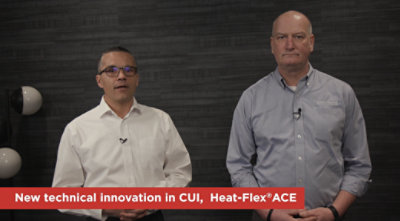
Heat-Flex® CUI-Mitigation Coatings
Designed to Withstand Harsh Conditions Before and During Service
WHAT are CUI-Mitigation Coatings?
On average, 60 percent of all insulation — in service for more than 10 years, will contain corrosion-inducing moisture, which will result in corrosion under insulation (CUI). In fact, studies show that organic protective coatings in CUI service last from a range of 5 to 13 years.
Traditional CUI coatings fail prematurely under insulation as they have limitations handling the service and pre-service environments. In the service environment, water, alkali, chlorides, and elevated temperatures lead to highly corrosive environments while improper coating thickness may lead to insufficient barrier protection or cracking. In the pre-service environment, shipping, handling, construction, and exposure to highly corrosive environments can prematurely deteriorate a coating.
Sherwin-Williams Protective & Marine has developed a product range to best mitigate the dangerous condition of CUI with its new line of Heat-Flex CUI-mitigation coatings. This next generation CUI portfolio is comprised of four products, all of which have passed extensive lab testing, showing good to excellent performance in a variety of tests.
- Offers superior CUI protection
- Protects from heat, corrosion, erosion & thermal shock
- Extends the total service life of process pipes, valves & vessels
- Suitable for a wide service temperature range
- Advanced epoxy formulations
- Micaceous Iron Oxide enhanced
Heat-Flex CUI-Mitigation Portfolio Overview
Duration - 2:9
A Complete CUI-Mitigation Range
Explore our extensive CUI-Mitigation product line, which includes three MIO-enhanced solutions and an innovative solvent-free advanced epoxy option. Download our brochure to learn more on how ow you can benefit from the unmatched corrosion protection and superior performance with these CUI solutions.
Sherwin-Williams protective coatings offer:
- Long-term corrosion protection
- Mechanical damage resistance
- Heat and UV erosion protection
- Application and user friendliness

MICACEOUS IRON OXIDE (MIO) HElps address CUI Failures
To better meet the needs of current CUI-mitigation specifications, Sherwin-Williams enhanced three formulations by adding MIO reinforcements. Each coating features a minimum concentration of 25% MIO pigment by weight in the dried coating film, helping to extend the life of the coatings and reduces risk by addressing typical CUI failure mechanisms experienced while in service and during shipping and construction.
Browse a few of our recommended products below and contact us to learn which products are ideal for your application.
Micaceous Iron Oxide (Mio) Coatings
New, Advanced CUI Epoxy Technology

Ready To Connect?
Our sales and tech teams are prepared to answer questions regarding which of our coatings for CUI will best suit your project— it is never too early to discuss!
Lunch & Learns

Asset Protection for the Energy Sector
Enhance your knowledge of protective coatings and linings within the energy sector. We offer engaging Lunch and Learn sessions designed to guide your organization in selecting the most suitable systems for your specific applications.
-
In-person Presentations
- 5 Presentations to choose from
- Custom presentations available
- Developed by industry leaders
- Earn PDH Credits
Additional Resources
A Wealth of Knowledge
See how we help customers find customized solutions for their project and application challenges.
Explore MoreEnergy Resources
Explore our knowledge base on all things coatings and linings for Energy.
Learn MoreEnergy Newsletter
Subscribe to our Fueling the Future newsletter for essential energy insights.
Subscribe Today





